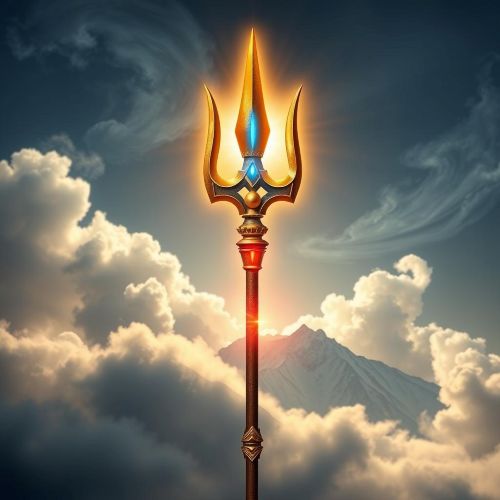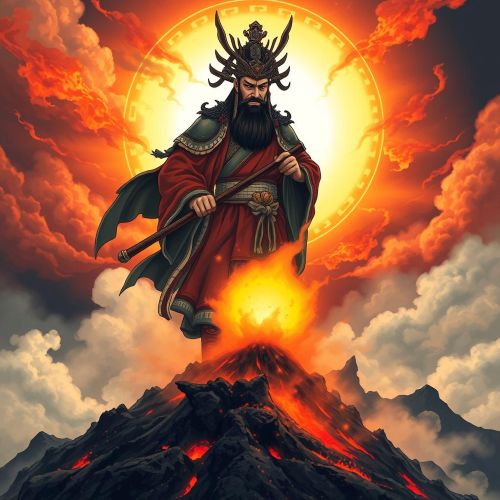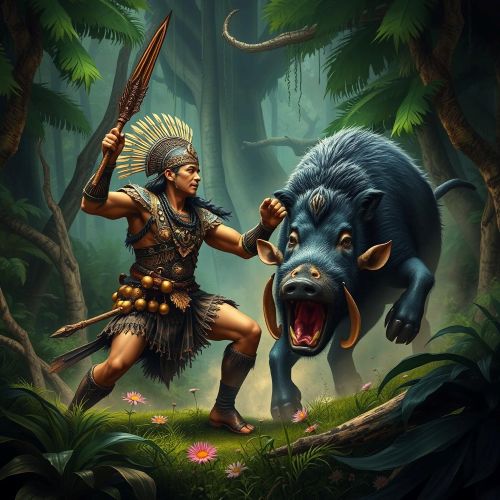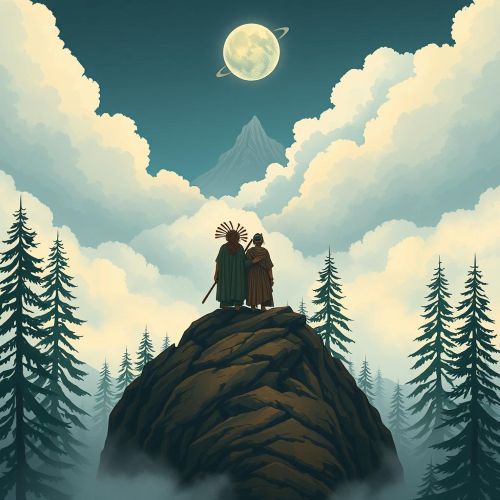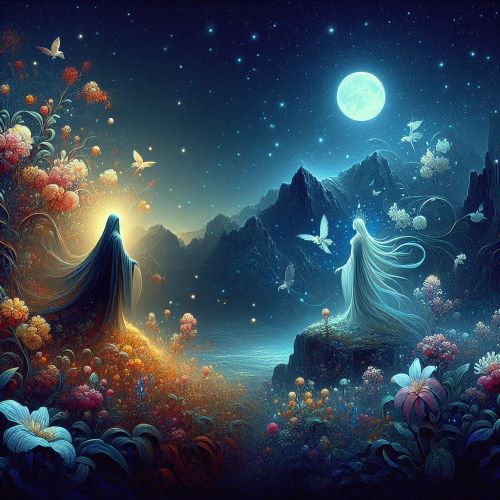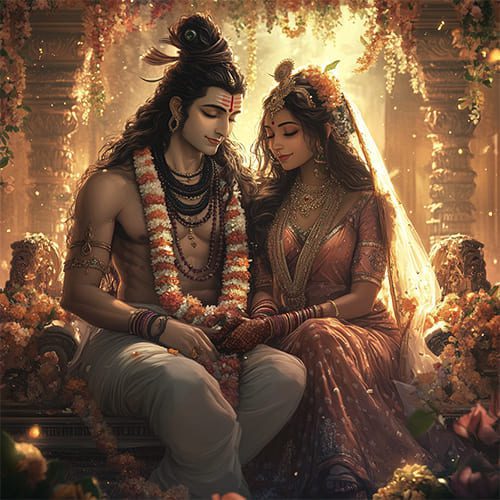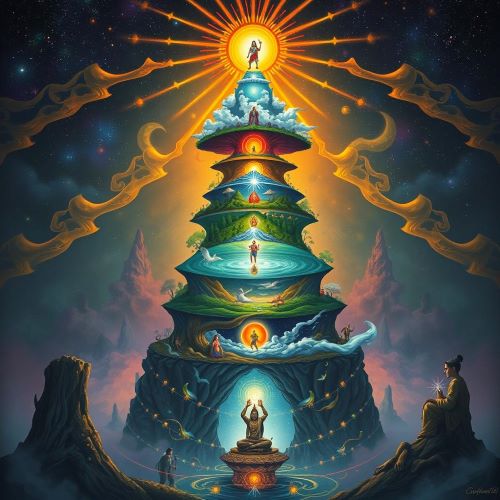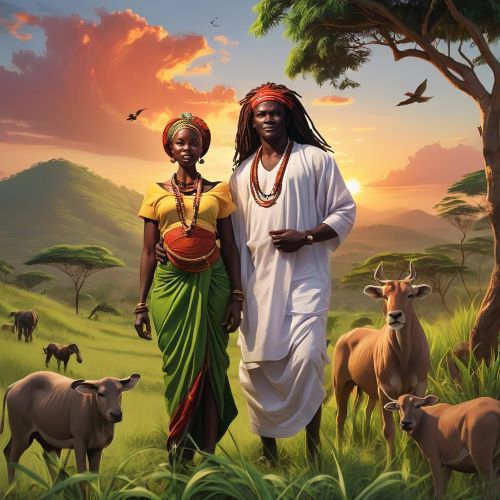Gandharvas: Mystical Beings of Music, Love, and Light
Who are the Gandharvas?
In the vast universe of Hindu mythology, the Gandharvas stand out as mystical celestial beings known for their ethereal beauty, musical prowess, and their role as messengers between gods and humans. Often residing in the heavenly realms, Gandharvas are intimately linked to divine music, love, and the arts. They are not mere entertainers of the gods but play crucial roles in mythology, rituals, and cosmic functions.
Origins and Identity
The term Gandharva is believed to be derived from the Sanskrit root gandha, meaning fragrance, reflecting their celestial and refined nature. These beings are first mentioned in the Rigveda, one of the oldest Hindu scriptures, where they are associated with the skies and serve as guardians of Soma, the divine nectar.
According to various Puranic texts and epics like the Mahabharata and the Ramayana, Gandharvas are born of the god Kashyapa and his wife Arishta, though some versions attribute their origins to different celestial unions. They are considered demigods and are often grouped with other celestial classes like the Apsaras, Yakshas, and Devas.
Physical Traits and Abilities
Gandharvas are described as exceptionally handsome, radiant beings with godlike charm and golden auras. They are often portrayed wearing dazzling garments, adorned with garlands, and glowing with a divine light. Their most notable ability, however, lies in their musical talent. Gandharvas are divine musicians whose melodies are said to enchant even the gods. They play instruments like the veena and mridangam, and their voices are unmatched in purity and beauty.
Their music serves not just for entertainment but also for cosmic balance and spiritual elevation. In many temple rituals, the Gandharva style of music, known as Gandharva Veda, is invoked for its sacredness and potency.
Role in Mythology
In mythological narratives, Gandharvas often serve as messengers, warriors, or guides. While mostly benevolent, they can be fierce protectors of dharma and enemies of demons. In the Mahabharata, a Gandharva named Chitrasena defeats Duryodhana in battle and captures him, later releasing him at Yudhishthira’s request. This incident highlights the Gandharvas’ power and their moral alignment with righteousness.
Gandharvas are also known for their romantic liaisons, often with Apsaras or even human women. Marriages between Gandharvas and mortals are known as Gandharva Vivaha, a form of love marriage sanctioned by mutual consent, without formal rituals—a progressive idea in ancient times.
Gandharvas and Apsaras
Gandharvas are frequently paired with Apsaras, the celestial nymphs of divine beauty and dance. Together, they embody the twin forces of heavenly music and dance, performing for the gods in Indra’s court. These performances are said to bring harmony to the cosmos and are often symbolic of the unity between sound and movement, spirit and body.
Spiritual Significance
In Vedic philosophy, Gandharvas represent the refined essence of the mind—the capacity to appreciate beauty, music, and art. They are also associated with astral realms, and some yogic traditions believe that advanced spiritual seekers can encounter Gandharvas during deep meditation or in dream states.
Gandharvas are said to possess clairvoyance, telepathy, and the ability to move between dimensions, making them essential intermediaries between heaven and earth. In Buddhist texts as well, Gandharvas are mentioned as celestial musicians who dwell in higher planes and influence human consciousness subtly through art and intuition.
Modern Day Influence
Though largely mythological, Gandharvas continue to influence Indian culture, especially in classical music and dance traditions. The term “Gandharva” is used in Indian classical circles to refer to a masterful vocalist or performer. In literature and media, Gandharvas are portrayed in modern retellings and adaptations, bridging ancient myth with contemporary imagination.
Temples across India, especially in Karnataka and Tamil Nadu, depict Gandharvas in their architecture and sculptures, underscoring their enduring presence in religious and artistic traditions.
Conclusion
The Gandharvas are far more than celestial musicians. They symbolize a higher consciousness, the divine harmony between beauty and spirit, love and devotion, sound and silence. From Vedic hymns to modern cultural references, their legacy continues to echo through the corridors of Indian art, spirituality, and mythology. Exploring the world of Gandharvas offers a glimpse into the intricate cosmology of Hindu beliefs and the role that music, love, and aesthetics play in the divine order.



